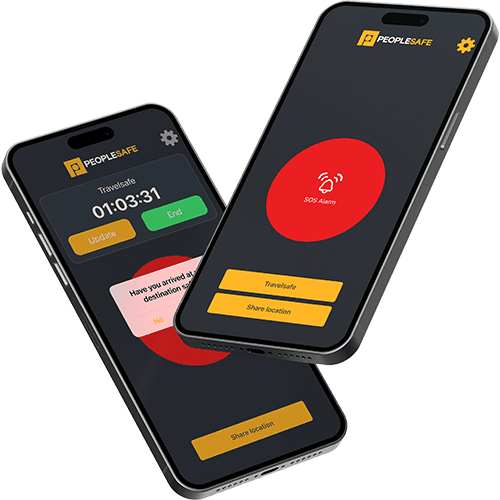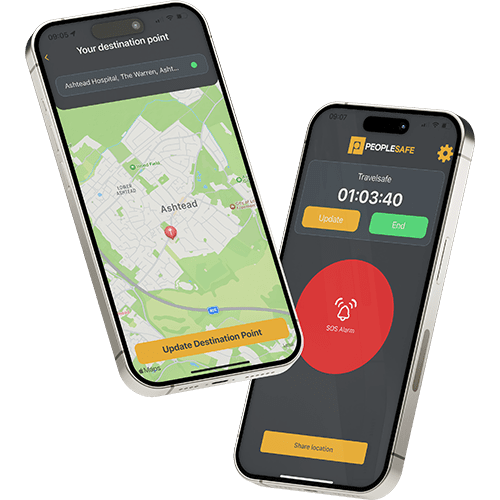Commuting – What Are Employers Responsible For?
Under UK law employers have a responsibility to take all reasonably practical measures to ensure the health, safety and wellbeing of staff in situations where the employee is acting in the course of employment. This responsibility covers situations where an employee is travelling for work, such as to business meetings, but does not apply to travel to or from work. Additionally, businesses have a common law duty of care to their employees, although again, in most cases this does not apply to the risks employees face while commuting.
However as the average full time employee spends an hour commuting per day, it’s clear that the commute can have a huge impact on employees’ mental health, job satisfaction and overall wellbeing.
Our own research found that 60% of people feel unsafe commuting on public transport during unsociable hours and 50% of people worry about travelling to or from work alone. We also found that employees who experienced a negative event at work were 9% less satisfied in their role overall. This suggests that employee satisfaction and wellbeing can be improved by providing staff with a means to feel safer on their commute. Such improvements can also provide wider business benefits, such as increased retention and productivity and lower business costs.
So, despite the lack of legal obligation, many employers are beginning to realise the value of providing protection for the commute as an important part of their wellbeing and retention strategies.
Changing behaviours
In response to tragic events over the last several years there has been growing awareness around personal safety and the need for systemic social change. However, there is still a disparity between the safety concerns employees have and the steps employers are taking to protect them, with 29% of employees believing their employer could be doing more to protect them.
In just 5 months in 2021, over 600,000 personal safety apps were downloaded as many people looked for ways to make themselves feel safer. By sending your GPS coordinates to chosen contacts and providing direct access to emergency response, these apps have lifesaving potential. On an emotional level, they can also provide peace of mind to users as they travel.
Our research also found that an overwhelming number of people (83%) were changing their everyday behaviour to feel safer on their commute. 24% of people changed the route they take, 23% now alert someone to their whereabouts and 22% changed where they parked. Additionally, research by the Suzy Lamplugh Trust revealed that 26% of people experiencing harassment changed their place of work as a result and 21% now avoid certain routes as a result of the harassment they have faced on their way to or at work.
In an effort to be more aware of staff safety, some organisations are asking managers to check on the safety of other employees throughout the day and after work ends. But although this can provide some benefits such as peace of mind for employees, it increasingly puts the burden of staff safety on people who are already overstretched.
However, this responsibility shouldn’t be left to employees. Proactive employers should be looking at what steps they can take to remove this burden from their staff. And this message is echoed by employees, with over half agreeing that an employer’s duty of care should be extended beyond the working day to the commute.
An organisation’s safety protocols shouldn’t end when an employee’s working day finishes, or when they leave a site. Instead, processes and procedures should be put in place that proactively support employees and create a safety culture inside and outside of the workplace, and there are many different ways organisations can do this.
Improving employee safety while commuting
The key to understanding your employees’ feelings of safety and wellbeing is to provide an opportunity for them to communicate about their commuting arrangements and any issues or concerns they may have. Those who finish late at night or travel to work early in the morning when public areas are less busy are at an increased risk, so considering flexible or off-peak start and finish times can improve their safety, and implementing a buddy system can provide some peace of mind that someone will be able to raise an alarm on behalf of an employee if they fail to make it home safely.
Personal safety service
Employers looking to provide high-level employee protection and improve staff feelings of safety should consider implementing personal safety devices or a lone working app. A personal safety service can offer 24/7 support to employees, wherever they are, allowing employees to raise an alarm in any situation where they may feel at risk. The introduction of these systems can improve peace of mind and feelings of safety while at work and while commuting. Additionally, the implementation of a third party system dedicated to employee safety removes the burden from managers.
As a result, employees are likely to feel happier and more valued, resulting in higher job satisfaction and improved retention. If an incident does occur, the ability for the incident to be resolved quickly and efficiently removes a trigger for low job satisfaction and high staff turnaround.
A Peoplesafe personal safety app is backed by expert Alarm Controllers, trained to handle distressing situations. This 24/7 monitored service helps to keep workers safe – wherever they are – by connecting directly to the emergency services in critical situations.
The service operates round the clock which means that employers can provide staff with the benefit of feeling safe both inside and outside of work. Whether commuting during unsociable hours, walking to a car park off site or meeting up with friends outside of work, users can access the Peoplesafe ARC and receive expert level protection whenever it is needed.
In non-emergency situations, the location sharing function and allows users to share their live location with contacts of their choice. This can be done via SMS or an alternative message system (e.g., Facebook Messenger or WhatsApp).
Additionally, Travelsafe allows users to enter their start point, destination and how they’re travelling. The app then calculates how long the journey should take and generates an estimated time of arrival alongside a timed alarm. If they fail to reach their destination by the ETA, the alarm is activated to the Peoplesafe ARC.
Calculate how much you could save on recruitment and retention by implementing a personal safety service:







